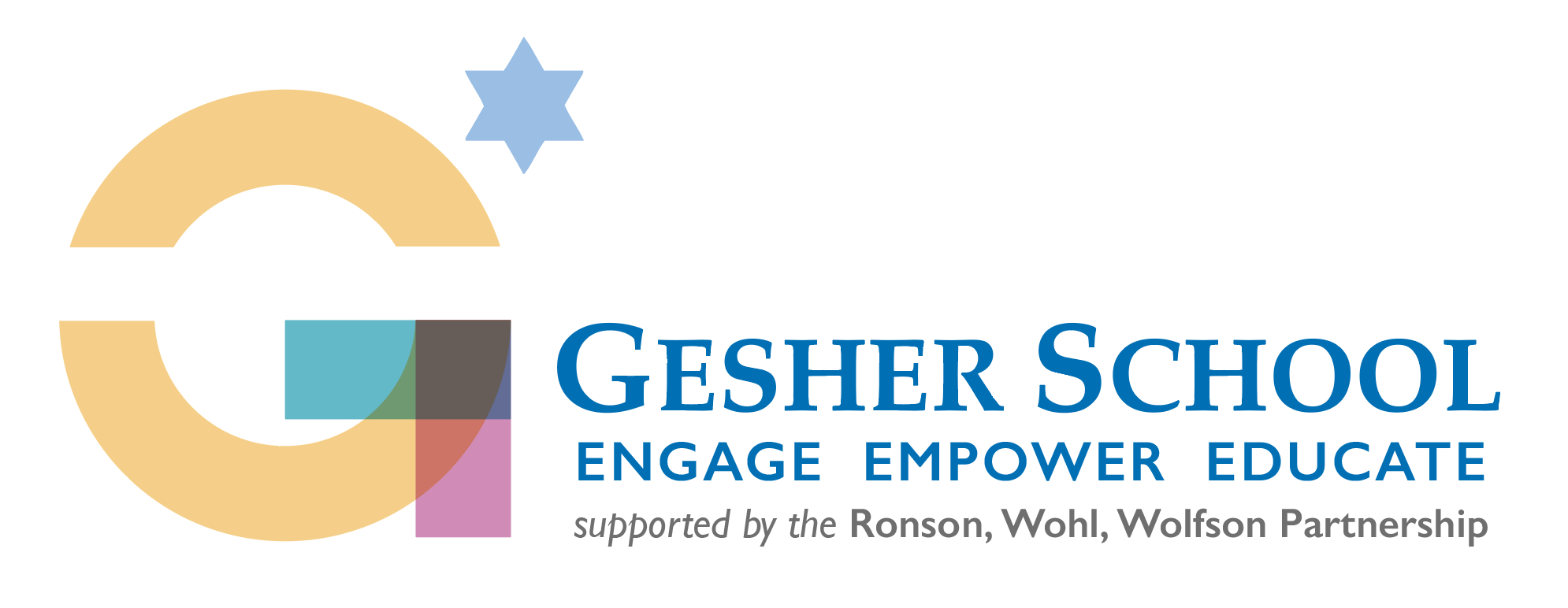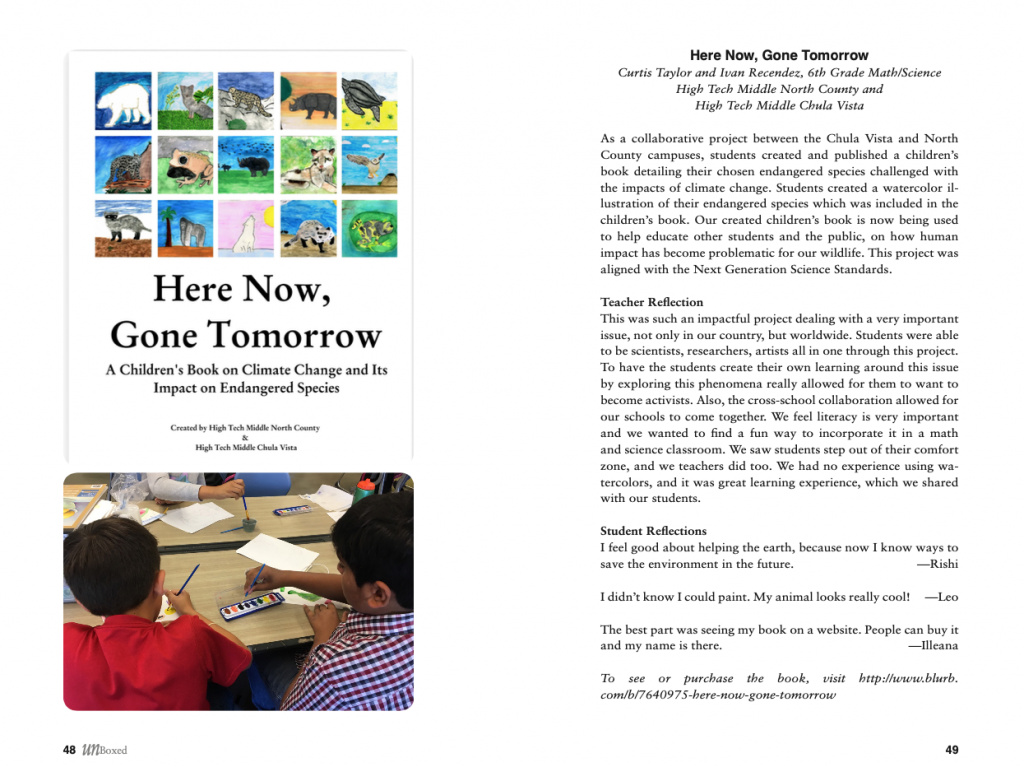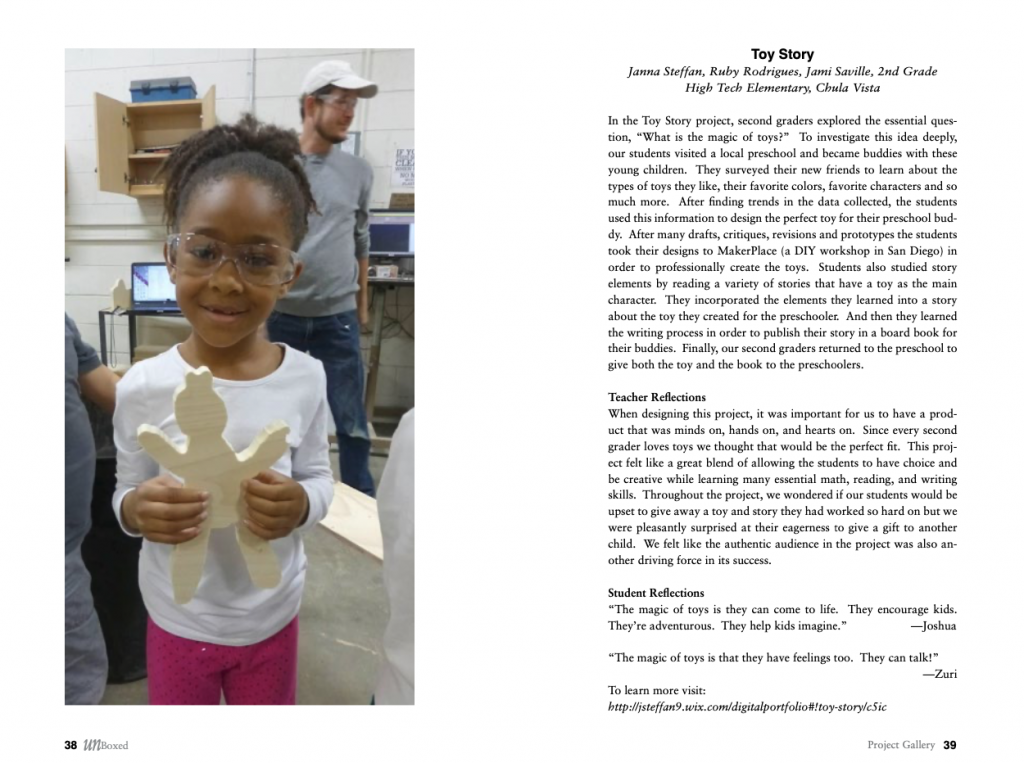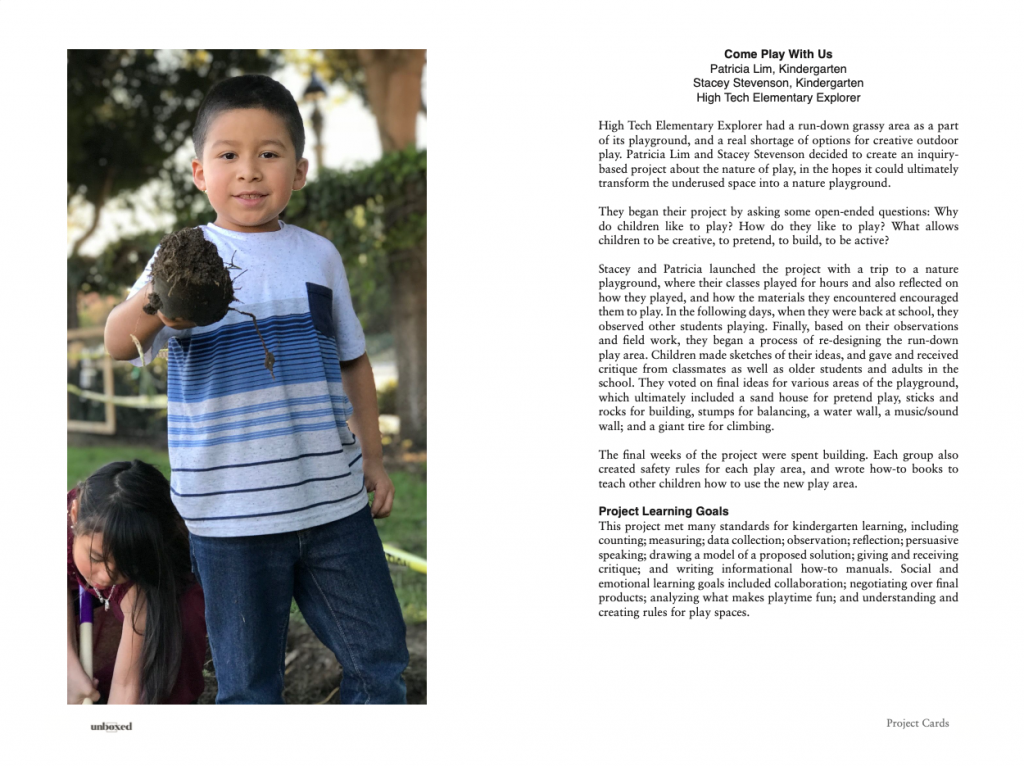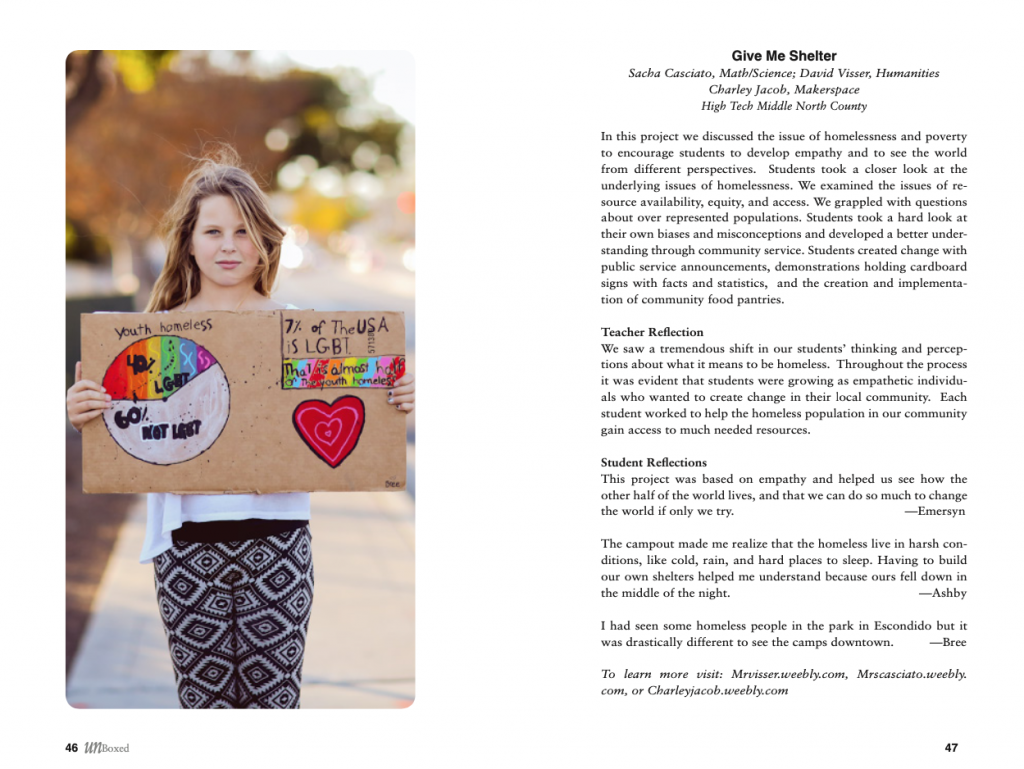Where Do Projects Come From?
HTH Unboxed
We would like to thank High Tech High for their generosity in allowing us to share in The Bridge project cards and the occasional article from their Unboxed journal.
High Tech High in San Diego, now some 16 small schools serving over 6,000 young people K-12 across four campuses, is one of the most feted and influential school designs in the world. It is known for its commitment to a project-based curriculum, to relationships, to deep learning and to the development of students through the development of staff. More relevantly for The Bridge, HTH is also committed to sharing practices and learning in multiple ways. They have a graduate school supporting Masters degrees for their own staff and others; they host literally thousands of visitors to their campus each year; they facilitate a MOOC (Massive Open Online Courses) available internationally and, for the last 14 years they have published their own adult learning journal, making it available both in hard copy form and via the Unboxed website, which is a rich treasure trove of resources.
Where Do Projects Come From?
by Angela Guerrero
On a cold October morning, my colleague Breawna and I carpooled to school together as we often do. I piled my bags into the back seat, hopped in the passenger side, handed over a cup of coffee, and settled in for a drive full of teacher talk. The topic of discussion, as it so often is, was how to make projects meaningful and still hit the content needed in the history standards. This is an odd question for us to ponder, since we teach at a school that alleviates some of that “standards” stress by asking teachers to teach what they are passionate about through projects. But there we were, without the pressure of a frustrated principal or a zealous department chair, agonising over our fear of not giving the kids enough content. This may be because we both started our teaching careers at traditional high schools, attended traditional universities, and attended traditional high schools where school looked very much the same; teachers lectured, students feverishly took notes, a test was given, an essay written and a grade awarded that measured proficiency on some standard. Breawna and I are both struggling to define what education is all about, and building the curriculum around projects requires a break from the past that is often difficult. But on that morning when Bre asked me, “Where do good projects come from?” I felt I finally had something to say.
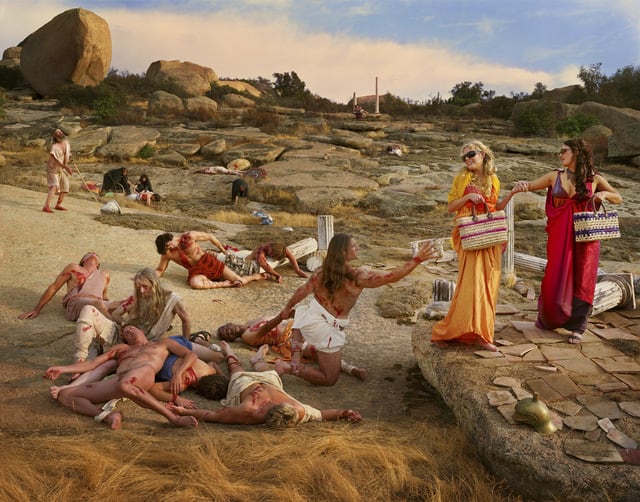
Eleanor Antin, “The Tourists” from Helen’s Odyssey. Copyright Eleanor Antin. Courtesy Ronald Feldman Fine Arts, New York, www.feldmangallery.com
This question, and the struggle to meet standards, plagued my first year teaching at High Tech High Chula Vista. So much of my work in the first year was simply writing and reading a pretty standard English class by most accounts. As I entered my final grades and completed my first year of teaching, I made a promise to myself to create engaging projects that would also comfort me by hitting standards. But what were the projects going to look like? Where would I get the ideas? Where did projects like that come from? Thirty journal entries, ten morning walks, hours of reviewing the state standards and countless conversations with friends left me no better off with my query as the summer days slipped by. I decided to simply enjoy summer for a while and return to the burning question in August. But then something happened that answered my questions. And it happened while I was enjoying myself, no less.
My sister invited me to a local museum to see an exhibition called “Historical Takes”, by Eleanor Antin. I sauntered into the swanky evening exhibition expecting to be impressed by the art. Indeed I was, but it turned out to be a lesson planning adventure like no other. Antin had created a collection of photographic portraits depicting historical tales from ancient Greece and Rome with feminist spins on the events. Helen of Troy was a devious vixen slinging a rifle on her hip. Ancient Grecians strolled casually by the dying veterans of the Trojan War with shopping totes and sunglasses. Wealthy Romans dined in elaborate clothing while servants died in the wings unbeknownst to their masters. And next to each scene was an explanation of the artist’s “take” on it. I was fascinated and found myself wondering how the artist came up with her interpretations. Then I wondered how I would create scenes from different time periods from different perspectives, say, a nihilist’s perspective, or a child’s perspective on the French Revolution. As I gazed at more images, and wondered more about how to create my own, I felt my legs tremble with delight. I had reached a new understanding. “This is perfect!” I exclaimed, to the surprise of the museum docent. History, photography, costume design, set and scene design, research, literature — all these things were present in the work. And they could all be studied in a project modelled after this exhibition. It almost felt like cheating since the idea came to me, not when I was agonising over the state standards or feverishly writing up drafts at my desk, but rather while I was out looking at art and doing something I enjoyed. From this outing, my 35mm Revolution project was conceived. In this project, students choose a revolution to research and write about and then choose one scene to re-enact in a photographic portrait. We plan to unveil the students’ artwork at High Tech High Chula Vista’s 2009 Festival Del Sol.
After the “art aha moment” as I now refer to it, I started thinking about projects while doing all sorts of things I love to do. Checking out music at local venues, I thought about starting a local artist Rolling Stone magazine to teach writing, photojournalism, editing and advertising. Running through the city, I thought about “walking a mile” in the shoes of someone who was homeless. Hiking up in the Sierras, I thought about nature reflections, the history of natural parks and the preservation efforts in California. It seemed that every time I was doing something I truly enjoyed, a new idea for a potential project sprang into my head. Some of the project ideas had been done before, but somehow, this new revelation made them feel fresh, pristine.
Do what you love and let the project drive the curriculum. These are the mantras of my wise teaching partner, Rod Buenviaje. Rod would listen patiently as I voiced my concerns about my inability to come up with what felt like meaningful projects. At the end of each conversation, he would repeat these mantras. I would nod in agreement and stare blankly out the window. I could never fully comprehend what he meant. After viewing Antin’s exhibition, however, the mantras made sense. I was doing something I loved. I was passionate about it. I wanted the kids to see it. I wanted to teach it. It turned into a project that would guide the curriculum.
So, where do projects come from? My answer is this: they are born in the places we love to visit, the things we love to see, the tasks we love to lose ourselves in. They are the things we find exciting. They are the things we deem worthy of writing essays and graphing charts about. They come from teachers who fall in love with something and decide to share that something with their students.
To read this article online, and to see High Tech High’s full collection of project cards, visit:
https://hthunboxed.org/blog/unboxed_posts/where-do-projects-come-from/
